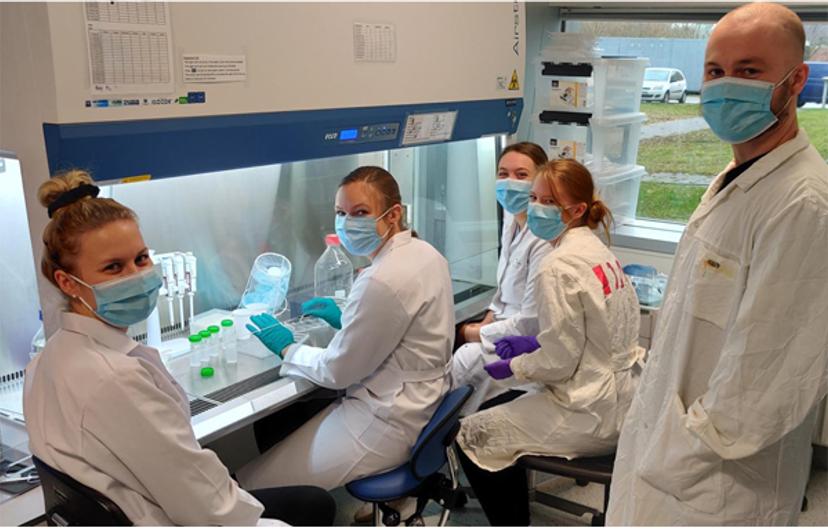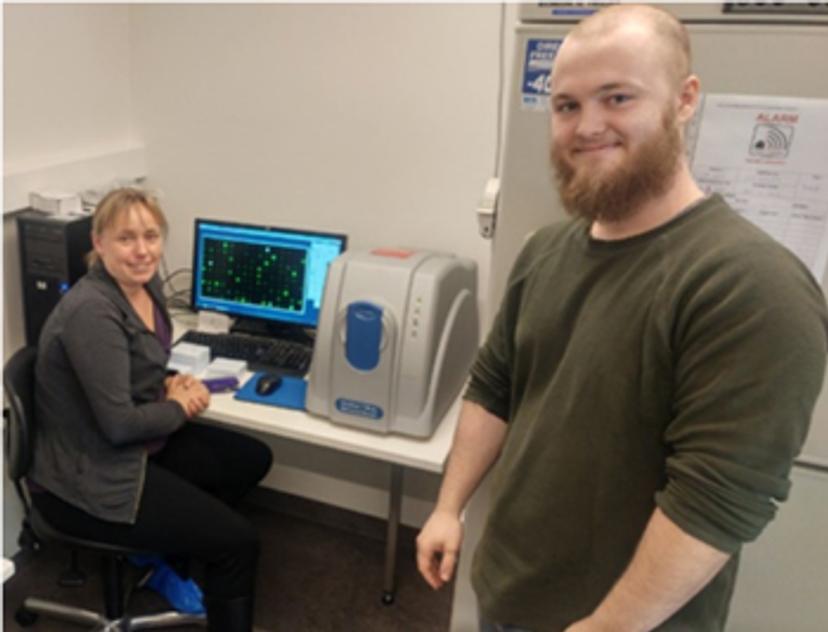How autoantibodies could enable better stratification of patients with rheumatoid arthritis
Associate Professor Allan Stensballe discusses the use of autoantibodies in precision medicine and the protein microarray technology enabling his research
12 Nov 2021

Autoantibodies are produced by the immune system in response to self-antigens. They are known to be both biomarkers as well as drivers of a number of autoimmune diseases – including systemic lupus erythematosus (SLE) and rheumatoid arthritis (RA) – where the immune system mistakenly attacks normal cells. Interestingly, autoantibodies can be detected many years before disease symptoms are present and the study of this group of antibodies can help us to understand disease pathogenesis. These antibodies also have potential use in diagnostic tools for early disease detection and in the stratification of distinct patient groups.
In this interview, we speak with Allan Stensballe, Associate Professor and co-chair of the Aalborg University Translational Biomarkers for Pain & Precision Medicine Group, about his work to develop autoantibody profiles of patients with rheumatoid arthritis, the high-throughput proteomics technology supporting this research, and how this work may one day be used in precision medicine.
Investigating autoantibodies and their importance
The Translational Biomarkers for Pain & Precision Medicine Group is an interdisciplinary, international group focused on human clinical research. Within this group, Stensballe is interested in the study of inflammatory diseases and their associated biomarkers, focusing on autoantibodies.
Compared to traditional protein biomarkers, which can fluctuate over time due to numerous factors, autoantibodies persist throughout the course of disease and can be present many years, sometimes 10-20 years, before physical symptoms of disease appear. “That's what makes autoantibodies really interesting as a biomarker because they're present way before a physical disease would make you, as a patient, feel sick,” Stensballe shares. This makes them excellent candidates for biomarkers of disease pathogenesis and for potential use in diagnostic tools.
Work by Stensballe’s group is contributing to the idea that autoantibodies are more complex and dynamic than first thought. By profiling different patient groups, Stensballe and his team are developing autoantibody profiles to ultimately create a catalogue of autoantibodies associated with different disease pathologies. These subsets of disease-associated autoantibodies could then be used to stratify patients and predict prognosis and response to therapeutics. To perform this research, Stensballe, who has a background in proteomics and trained at the University of Southern Denmark Odense, uses state-of-the-art post-genomic technologies.

Better biomarkers for rheumatoid arthritis patient stratification
One of the key projects Stensballe’s group is working on is the identification of autoantibodies associated with rheumatoid arthritis, an autoimmune disease that causes pain, swelling and stiffness of joints. Typically, patients are grouped by the presence or absence of anti-citrulline protein antibodies (ACPA), a group of autoantibodies that bind to citrullinated proteins, with ACPA-positive patients typically experiencing more severe symptoms. In the literature and anecdotally, ACPA-positive patients typically have a more aggressive disease trajectory. They tend to be sicker and have more debilitating adverse effects associated with rheumatoid arthritis compared to ACPA-negative patients. Despite this, there is still variability within the ACPA-positive and ACPA-negative groups in terms of clinical presentation and response to treatment.
In a recent work, published in Scientific Reports, Stensballe set out to identify new autoantibodies that could help to diagnose rheumatoid arthritis in an ACPA-negative patient group that, by other measures, exhibit results expected of ACPA-positive patients. Stensballe explains, “30% of the patients respond negatively to this serological test, so they are not scoring or not measuring this in their plasma. So, if you measure by ACPA alone, then you have 30% of this patient group not showing up as rheumatoid arthritis patients, but they will still be patients based on a lot of other measurements.”
While the project is still in its early stages, Stensballe hopes that the trends seen in autoantibody profiles of the ACPA-negative patient group can be validated to assist in the development of new diagnostic tests. “It could be a new test for multi-ACPA variants that would actually include or detect these seronegative patient groups. So, instead of having a test that identified 70% of RA patients, we could have a test that identifies all of them. That would be really important, clinically,” Stensballe says.
Identifying autoantibody profiles

To help profile the autoantibodies associated with specific patient groups, Stensballe’s team has worked closely in collaboration with Sengenics and uses its Immunome protein arrays which can profile autoantibodies to more than 1,600 correctly folded proteins in a single miniaturized assay. “We've used these profiles to bioinformatically identify the autoantibodies that are more or less associated to the patient groups,” explains Stensballe. The lab uses the assays to compare plasma samples from healthy controls with both ACPA-positive and ACPA-negative patients, using just 15 µl of patient sample per protein array, something which is particularly important when working with precious biobank samples. Many of the staff in Stensballe’s group are involved in the research, with students and senior researchers working side by side to prepare protein array assays. Raw image data is processed and then used in a bioinformatics pipeline developed by Ph.D. student, Thomas Bouet Guldbæk Poulsen.
“The complex arrays are really reproducible, so all the spots on the array are uniform, and very well spotted. The slide design is very elegant with positive controls, negative controls, different isotype validations, and a lot of QC implemented in the slide design that we use for interpreting or qualifying the data,” explains Stensballe.
Working in an academic collaboration with Sengenics CSO, Professor Jonathan Blackburn, Stensballe plans to develop subgroup-specific arrays, containing the autoantibodies related to each patient subgroup, as well as the development of new multiplexing techniques. “Moving forward, we are trying to create these sub-arrays where we can add in 1, 2, 3, even 10 interesting biomarker candidates,” says Stensballe. Ultimately, it is hoped that these small assays could one day be used in point-of-care devices in a clinical setting.
The future of autoantibodies and precision medicine
The identification of patient-specific autoantibody profiles has broad applications in the field of precision medicine, including the potential to determine the risk of disease severity or to predict if a patient will respond to a certain treatment. Looking to the future, Stensballe predicts that a range of complementary proteomics technologies will be used in the discovery and development of autoantibody-based diagnostic tools that will help stratify patients to provide better, personalized treatment.
He highlights the role mass spectrometry-based proteomics as well as a number of different array- and chip-based technologies that allow for the screening of hundreds or thousands of autoantibody biomarkers at the same time, including Sengenics’ protein arrays and Olink Proteomics’ platform, among others. “I think moving forward, we'll see the Olink and Sengenics arrays being really important players in the clinical biomarker and precision medicine fields where we can use not only a single biomarker but biomarker matrices as a small relevant tool to profile patients.” Stensballe concludes.
Learn more about Sengenics’ protein arrays, its patented KREX™ protein folding technology and its applications in autoantibody biomarker discovery in this interview with KREX™ inventor and Sengenics CSO Professor Jonathan Blackburn.
References
Poulsen TBG, Damgaard D, Jørgensen MM, Senolt L, Blackburn JM, Nielsen CH, Stensballe A. Identification of potential autoantigens in anti-CCP-positive and anti-CCP-negative rheumatoid arthritis using citrulline-specific protein arrays. Scientific Reports. 2021
